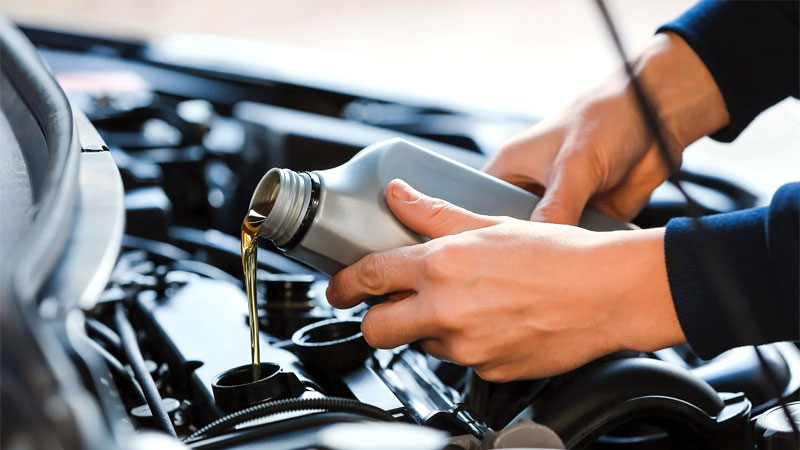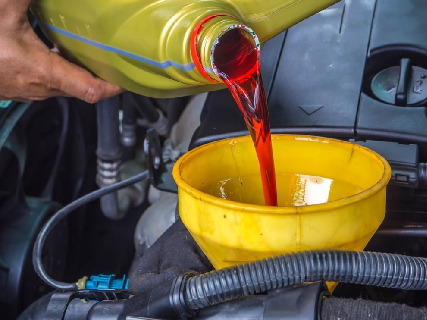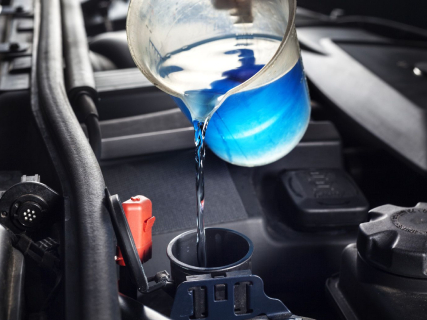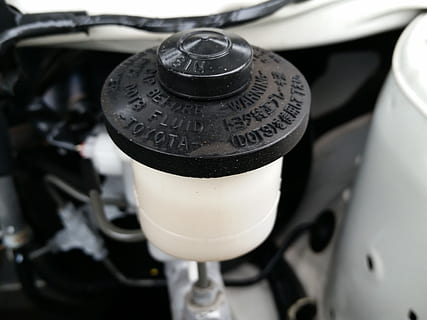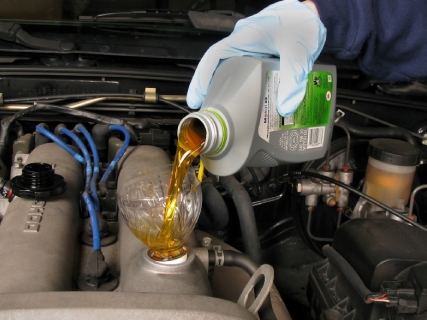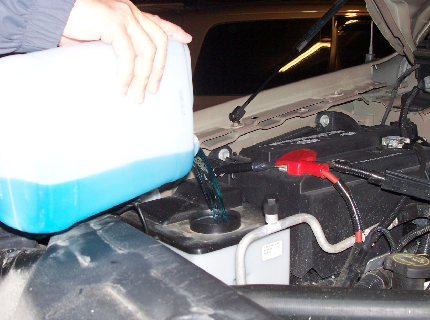Most car owners understand that regular oil changes are vital for their vehicle’s performance and longevity. But did you also know that there are other car fluids that need to be checked and changed at regular intervals?
Multiple oils and fluids in your car can get confusing. They differ significantly from each other and are not easy to remember.
In fact, a small leak or low level of these fluids can cause major damage to parts of your car. In some cases, it can also lead to unsafe driving or problems in starting your vehicle.
So, here’s a list of six car fluids you need to check regularly to keep your vehicle in good shape. Read along to learn more about what they do, how often to check them, and how to do it.
Car Fluids That Need to Be Checked and Changed
1. Engine Oil
The engine oil is an integral part of the combustion cycle. It helps lubricate the engine’s components, make them cool and reduce reduction. However, the recently developed engine oil is much more capable than that.
Its benefits also include maintaining the viscosity over varying temperatures, providing wear protection, and preventing acid build-up.
With this importance, adverse incidents might occur if you do not change the oil as per the maintenance schedule. It can lead to car engine overheating, and over time, the components inside will warp and wear out. Worst case scenario, you will have to pay thousands of dollars if the entire engine is in complete failure.
See Also – 4 Reasons Why You Should Change Your Own Oil
How Often to Check
Oil condition is one of the indicators to show a car engine’s health, so check it at least every two weeks or monthly. More so for older vehicles. Besides, don’t forget to check it before your road trip. I know you don’t want to be left stranded on the road!
If you leave your vehicle without changing engine oil for a prolonged period, there will be some signs to alert you. These include engine light turning on, oil and burning smell from the engine, and knocking noise. Immediately check and change it to avoid severe damages.
How Often to Change
The changing interval can differ depending on the vehicle. If you own an old car, you should change the oil every 3,000 miles. However, you can stretch the service time to 7,500 to 10,000 miles (6 months) for modern cars.
To make sure, I recommend checking your car owner’s manual for the best service intervals.
How to Check
It is advisable to check the fluid when your car engine is turned off. To get the best results, you can drive your car for a short distance then let it cool down for 10 minutes.
The car will have a dipstick in the engine bay for you to quickly inspect the fluid. It usually has a yellow color. Pull out the dipstick and wipe it off with a clean white rag or tissue to check its color and condition. Reinsert it and pull it out to check the oil level.
There will be indicators for MAXIMUM (full) or MINIMUM (add) level. The level should be near the maximum. If not, you need to top it up. Also, look at the oil’s color.
- If it has a yellow or amber color, your oil is in good shape.
- In case it has a dark coffee color, you need to change it.
- If its color is milky, this means coolant is leaking into the engine.
See Also – 5 Reasons There’s Oil on Your Spark Plug Threads
2. Transmission Fluid
The transmission fluid is responsible for the gear of your vehicle to work smoothly. It lubricates the gearbox, also known as transmission.
You must remember that your car’s transmission may be automatic or manual and requires the corresponding fuel type. That means you will have to pick from automatic transmission fluid, manual transmission fluid, or CVT transmission fluid.
The correct level of transmission fluid keeps the transmission from wearing out. The synchro rings and sliders need a smooth surface while shifting the gear.
Other Functions of Transmission Fluid
- Ensures metal surfaces remain clean and wear-free
- Regulates operating temperature by enriching the cooling function
- Advances the rotational speed
How Often to Check Transmission Fluid
If you have a transmission fluid leak, you will eventually have problems in shifting and ultimately damage to internal components of the transmission. Therefore, you must check it at least once every six months. Moreover, you must also change it every 30,000-60,000 miles, especially if you face glitches in shifting the gear.
That being said, you can arrange the fuel change after 60,000-100,000 miles in case of automatic transmission fuel.
How to Check
Checking the transmission fluid level is as easy as that of the engine oil. Pull out the dipstick and wipe it clean with a rag. While the engine is still running, place it back and remove it after a few seconds. You can determine the fluid level with the ‘Full’ and ‘Low’ indicators given on the stick.
Here’s what the fluid color tells you:
- The red color reflects the newness and safety of the fluid.
- Dark red or light brown means the fluid is used to an extent.
- If it is dark brown, you must change it immediately.
- Black color refers to burning of the oil, in which case you must take your car to a specialist.
3. Coolant
Engine coolant is one of the most critical fluids required for the fluent functioning of your vehicle. Also known as antifreeze, it flows through the vehicle engine to maintain a nominal temperature range, preventing it from overheating.
In the absence of enough coolant, the heat produced due to constant combustion processes can destroy the vehicle engine. In such a case, the water would evaporate in hot temperatures and freeze in cold climates.
- The coolant blends with water and glycols to maintain an optimum temperature.
- Coolant additives prevent the engine components from corrosion.
How Often to Check
Similar to other essential fluids of the car, you must check the coolant levels and color frequently. You need to check your vehicle’s coolant at least twice a year. Additionally, you must change it after the first 60,000 miles and every 30,000 miles after that.
How to Check
Checking your car’s coolant is relatively easy as you need not even use the dipstick for the same. The radiator has a see-through reservoir on the side with measurement marks. If the coolant level does not reach full, you can add a 50-50 blend of coolant and water until it reaches the ‘Full’ mark.
- The standard coolant color is blue, green, red, or yellow.
- If the coolant looks colorless, rusty, or has particles floating, replace it immediately.
- In case the coolant has an oily layer, get your vehicle gasket checked by a professional.
4. Brake Fluid
This is the type of fluid required to keep the hydraulic brake and hydraulic clutch working flawlessly. The fluid functions by amplifying pressure on the front and rear brakes, leading to stopping the vehicle.
What makes it one of the prime essential car fluids is its ability to stop the car. If the brake fluid level is low, contaminated, or not in the proper flow, it can hamper your vehicle brake system. As a result,
- You may need to press the brakes longer.
- The pedal might get squeaky.
- Brake system might fall prey to corrosion.
See Also – 5 Symptoms of a Brake Caliper That’s Sticking
How Often to Check
Though the frequency of checking the brake fuel depends on your vehicle condition, you can do so regularly. Check the brake fuel level every time you get the other oils of your car engine changed. That being said, you may not need to replace it any time before 4-5 years.
How to Check
Similar to the coolant, your vehicle’s brake fluid is present in a see-through reservoir. Therefore, you can easily see the level without having to remove the cap.
A few signs indicating that you need to change the brake fluid immediately are:
- Dark brown or black color reflecting that the oil is burnt.
- If the fluid color is not clear or transparent.
- In case the fluid level is lower than the ‘Full’ mark on the reservoir.
Pro tip: You must refrain from removing the cap frequently as it can lead to drawing moisture into the hydraulic system.
5. Power Steering Fluid
It is a hydraulic fluid that helps your vehicle’s power steer function without any glitches. It transfers power to the steering and ensures all the components of your steering system work well.
After prolonged use, the O-rings, seals, and other such parts may lose their momentum. Moreover, they may fall prey to corrosion or lead to leaks due to deterioration. This leakage can prove to be highly dangerous for the entire system.
Besides, the absence of sufficient amounts of this fluid leads to difficulty in turning the wheel. It might also make noise while cornering.
How Often to Check
Though you may not find it in the regular maintenance list, checking the fluid level at least once a month is your best bet. Moreover, if you face the problems mentioned above, visit a mechanic immediately.
You must replace it every 30,000-50,000 miles or around every 3-5 years.
How to Check
Checking the power steering fuel is an easy process as you need not uncap any pump. The fuel reservoir is a see-through container and mostly comes with ‘Min’ and ‘Max’ measurements indicating the minimum and maximum limits.
The original power steering fuel color is pink or red. So, if the color has changed to black or dark brown, you may have to replace it immediately. This may occur due to oxidation, mixing of wear materials, and other debris.
6. Windshield Washer Fluid
This is the fluid that your vehicle uses to wash the windshield with the wipers.
The fluid comprises ingredients that can remove stubborn substances from the windshield. Moreover, it helps maintain the high quality of the wipers.
If you use water or the washer fluid is not enough, the wiper can shriek off and damage the windshield glass. Additionally, this fluid keeps the wipers intact and prevents them from wearing out quickly.
Besides, you would not want to run out of this fluid in the middle of the road. Therefore, regular checking is necessary.
How Often to Check
The frequency of checking your windshield washer fluid depends on the number of times you use it. Generally, you must check it at least once a month to make sure it does not fall short when necessary. Besides, you may need to check it more regularly during the rainy or snow season.
You may need to replace the windshield washer fluid around twice a year as your vehicle uses it quite frequently.
How to Check
The windshield wash reservoir is usually present at the bottom of the shield. It is a transparent container, so you can determine the fluid level without uncapping.
In case the fluid level is less than a quarter empty, refill it immediately. Also, make sure to check this tank for leaks and cracks.
- What the Letters and Numbers On an Automatic Gear Shift Mean - Sep 12, 2022
- How Long Does it Take to Change Tires? (Professional vs DIY) - Jun 8, 2022
- 2022 Ford Bronco EcoBoost Performance & Off-Roading Specs - Jun 2, 2022


